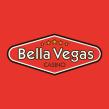On this page
21 Movie - Truth and Fiction
On this page
Introduction
Rather than spend hours creating a long list of all the flaws in the "21" movie, it would be easier to list what has some basis in truth.
There was indeed an MIT blackjack team. In 1994, when the events loosely depicted in the movie took place, there was just one team. A second competing team came along later. In addition, many other colleges had teams as well, including my own UCSB. The book Bringing Down the House, by Ben Mezrich, is about an MIT team, and takes a lot of poetic license with the truth. The movie, in turn, takes a lot of poetic license from the book.
The spotter and big player strategy is a very well-known and successful card-counting tactic. It is covered well in Ken Uston’s blackjack books. As shown in the movie, a spotter will count the cards, and signal the big player to jump in when the count is good. Briefly, a good count means the remaining cards are rich in tens and aces, which favor the player. The spotter will keep a low profile, betting small, playing basic strategy. When the big player comes in, he will appear to be the average table jumper, playing for a few minutes, and leaving when he has a bad run of cards or the dealer shuffles. It is accurate that the spotter will convey the running count to the big player with a code word. Unlike the movie, it would be advisable for the spotter to leave, after the big player arrives. Pretending to get a cell phone call would be a good excuse. Otherwise, the spotter would consume valuable good cards, leaving less for the big player. It is also ill-advised to make it easy for the casino to make the connection between spotter and counter, by the two often playing at the same time and table. Once the big player arrives, and knows the count, he can take it from there, and leave when the count gets bad. Sometimes the big player will not know how to count, in which case the spotter will have to signal what to do, but such was not the case in the movie. Unlike the movie, a good team would change its signals and code words, from time to time. I don’t think I can fault the movie for this, because I read that most Strip casinos didn’t want to be involved, but all the playing seemed to be done at just four casinos: the Red Rock, Hard Rock, Planet Hollywood, and Riviera. Good teams and individual players spread their action over many more properties than that, to avoid detection.
Being from MIT, the members of the card counting team were naturally pretty smart. The number of known card counters I have met through the years I would put in the low hundreds. They are everywhere from the biggest names in the game, to recreational weekend warriors I befriended. All of them were at least fairly smart, ranging up to gifted geniuses. However, in my opinion, you don’t need to be gifted in math or card games to make it in card counting. It really is not that hard. To learn basic strategy and a simple card counting system, like the Knockout or Red Seven, would take only about 40 hours. However, lazy card counters don’t read a book. They skip over basic strategy, and go off of what little they learned from movies like "Rain Man" and "21." They don’t know about proper capitalization, and wipe out their bankroll at the first run of bad luck. Successful people, not just in card counting, have a healthy respect for those who have succeeded before them, and learn from them. They have a healthy skepticism about the many myths that pervade blackjack. They have a respect for their bankroll, and treat it conservatively, letting them ride out the ups and downs of the game. It takes a disciplined personality to make it at blackjack, and those types of people tend to be smart to begin with.
The book made it seem like counting cards was like a license to print money. Although the movie clearly took place in the present day, the events the movie was based on happened in 1994. Back then, it was easier. The table limits were higher, and some technical advances to catch counters were not available yet. The reality is that card counting is a grind. However, it would not make for an exciting Hollywood movie to watch some guy sit there playing cards, losing almost half the time.
The movie made it seem like there was only one counter catcher in all of Las Vegas. A surveillance manager seemed amazed that this one consultant could actually count cards himself. What I find to be closer to the truth is that most pit bosses know the rudiments of card counting. They may not be able to successfully play themselves, but they know the red flags. If they suspect something, they can call surveillance for a "skills check." Then somebody in surveillance can use computers to do a more accurate assessment. If the player is counting, and doing it well, the computer should be able to tell. Again, there is an anachronism in the movie, the events it is based on happened in 1994, but the movie clearly took place in the present. It may be that in 1994 surveillance didn't know much about card counting, so maybe my criticism isn't fair. Then, and more so now, card counting is simply hard to get away with. Good card counters can play tricks to avoid setting off the red flags, but often those tricks depress profitability. Card counting has become hard to get away with as a profession. Many former professional card counters have moved onto other games and angles.
The movie showed the punishment for card counting to be a good beating in the casino basement. There is some historical basis of truth in this. While Vegas was still more "old school," beatings were indeed known to happen, mainly during the seventies and early eighties. In recent years, although card counting is perfectly legal, Nevada casinos have still been known to illegally detain card counters many times. In the backroom, counters can be intimidated, illegally searched and photographed, and generally given the heavy-handed treatment. The book "Beat the Players" by Bob Nersesian is an outstanding account of several recent cases. Unlike the movie, the card counter would be advised to immediately contact an attorney. Then the local police department should be called. Chances are they will take the casino's side, and try to do nothing. However, a good gaming attorney can do more to compel them to do an investigation. Without a good gaming lawyer, the counter will have a tough fight. Despite the obstacles in obtaining justice, an illegal back rooming can result in a six-figure award or settlement. The expected value of filing a lawsuit is much higher than playing blackjack itself. Fortunately, the vast majority of the time that a card counter is caught, it is handled professionally. The casino response can range from being "backed-off" from blackjack only, all casino games, or being officially read the Trespass Act, and barred from the casino property.
Finally, there was a comment in one of the training meetings that splitting eights against a ten or ace is for "suckers." Was John Patrick an advisor to the script writer? Any legitimate blackjack writer will tell you that the correct basic strategy play is to split. An exception is that you should surrender against an ace, if the dealer hits a soft 17, and surrender is allowed.
Putting aside the unrealistic treatment of card counting, the movie was still quite bad, in my opinion. The characters were clichéd and uninteresting. The dialogue was shallow. The production was over the top, with too many montage scenes, and close ups of chips and cards. It is not the worst movie I have ever seen, but is certainly way below average for me.
Online Blackjack Bonuses View All
We constantly maintain a database of all the casino bonuses from the hundreds of online casinos we have reviewed, and we note which bonuses allow blackjack to count towards the wagering requirements. The below table shows a ranked list of the best money online blackjack bonuses, the ranking also takes into consideration wagering requirements, bonus amount offered, the quality of the site and more.
External Links
Myths & Facts in the movie "21" by my webmaster, Michael Bluejay
MathProblems.Info: Problem 186 is the "Monty Hall" game show problem discussed in the movie.




